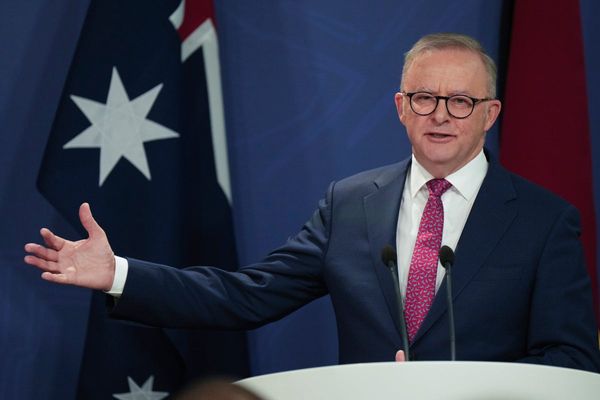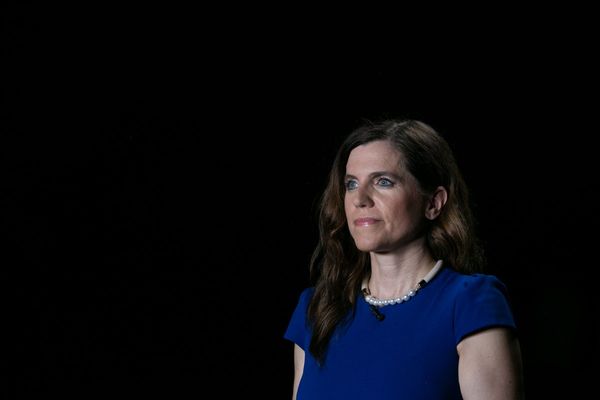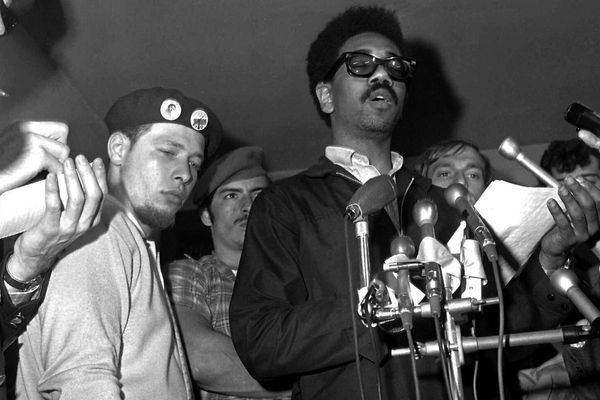
Over five days, the leaders of the G7 and Nato shifted from the pastoral backdrop of the Bavarian Alps to the more prosaic plains of Madrid, but at no point was there a shortage of photo opportunities, trumpeting of democracy, multibillion-dollar announcements or pledges of unstinting resolve to help Ukraine.
But as the leaders head home to their more mundane domestic challenges, it is legitimate to ask how far these promises change the balance of power on the battlefield, or put doubt in the mind of Vladimir Putin. For although these summits were an exercise in reassurance to domestic electorates, and to a lesser extent to Ukraine, the target audience was really one man: the Russian president.
Not surprisingly, he gave off the impression of insouciance. In central Asia, on his first trip overseas since the war began, he claimed: “The work is going quietly, rhythmically, the troops are moving and are reaching the lines that have been given to them as milestones. Everything is going according to plan.”
The sudden, and somewhat mysterious, withdrawal of the Russian garrison from Snake Island (measuring 600 metres by 700 metres) might suggest otherwise, but it is not the start of the removal of all Russian troops from Ukraine, including Crimea, a war objective restated as realistic by the UK foreign secretary, Liz Truss, on Thursday.
Part of the difficulty is that these summits were not quite the council of war that Volodymyr Zelenskiy needed, partly because Joe Biden did not want to play into Russian propaganda by portraying Nato as anything other than a defensive alliance, the armoured guardian of its own territory.
The Nato summit was largely about the consequences of Russia’s invasion, not for Ukraine but for countries already inside or about to join Nato. It was about “defending every inch of Nato territory”, as Biden put it.
Ukraine does not directly benefit from the admission into Nato of the “two paladins of peace”, as Boris Johnson described Sweden and Finland. The same applies to the sevenfold increase in Nato forces on high alert, the establishment of the first permanent US operational headquarters on the alliance’s eastern flank in Poland, the increase in the number of US troops in the region, or a new 10-year strategy that dispenses of any notion of partnership with Russia. That is not to minimise their significance. On paper, the intention to build such high-readiness forces is the greatest systemic – and mental – change in Nato planning since the end of the cold war, but it has no impact on the killing fields of Donbas. To paraphrase Zelenskiy, he does not need a new Nato strategic concept – he needs ammunition.
But that does not mean no progress was made. For one thing, the French president, Emmanuel Macron, could not have been more blunt in his criticism of Putin, or clearer that avenues to a ceasefire are closed. If there is a premature peace faction, it does not reside in Paris.
For Zelenskiy himself, the summit was about finances, weapons and politics.
On finance, Ukraine is gobbling up an extraordinary $5bn a month as its economy and exports degrade, but the US is prepared to underwrite this. Biden promised another $800m in defence assistance in the next few days, including a new advanced air defence system. The UK, the second biggest supplier of military aid, agreed to spend another €1.15bn of military aid to Ukraine. Germany, going round in circles about delivering arms, has been better at subsidising Ukraine’s economy.
A further “recovery summit”, dedicated to the reconstruction of Ukraine, will be held in Lugano on 4-5 July, which Zelenskiy himself is slated to attend.
On weapons, before the summit, Mikhail Podolyak, an adviser to the Ukrainian president, gave an inventory of Ukraine’s needs: 1,000 155mm-calibre howitzers, 300 multiple-launch rocket systems, 500 tanks, 2,000 armoured vehicles, and 1,000 drones.
Ukrainian forces, officials say, have lost 700 armoured vehicles in the last three months, and replacements are urgently needed. Both France and Spain have responded with the offer of tanks or armoured personnel carriers.
Above all, they need ammunition or artillery. Russian artillery is firing 40,000-60,000 missiles a day, while Ukrainian artillery can respond with 5,000 to 6,000. Worse, the west does not have the ammunition for the old Soviet artillery systems that Ukraine uses. So far, the US has only delivered four Himars launchers, but more deliveries from both the US and the UK have been promised. At present they are being used almost exclusively to hit Russian ammunition depots in the Luhansk region.
There can be no counter-offensive planned for the summer or the deployment of newly trained forces on the frontlines unless there is a transformation in the speed and volume with which weapons are supplied.
There is also an urgency. Putin believes time is on his side and that Russia “can pound the longest”. Just as the Ukrainian forces can only suffer a certain level of attrition, so too western politicians can only risk the wrath of their electorates for so long. The proposals from the US to cut the price of Russian oil, and from Italy to curb the price of Russian piped gas – discussed at length at the G7 – were probably the two most significant ideas to emerge from the summits. Macron admitted these ideas are currently a construction site. They urgently need a lot more work if the west is to find a way to hit the Russian economy, and protect European consumers. US state department officials were in London as soon as the summit ended to pursue ideas with the Treasury.
Gustav Gressel, a security analyst at the European Council on Foreign Relations, identifies a “western policy preference to fight this war as an economic contest as opposed to a military one”. But, he argues, looking at things developing on the ground, the other way round would be better: “The Russian economy could be stabilised by Moscow, arguably at a lower point, but still. Economics is not Putin’s playground, and he will not have his geopolitical ambition tamed by economic setbacks. On the other hand, breaking Russia’s offensive capabilities by providing Kyiv with the tools to do so (tanks, infantry fighting vehicles, artillery, air defence) would be the cheaper solution.”
The next few months, not these summits, will prove whether those tools will be provided.







